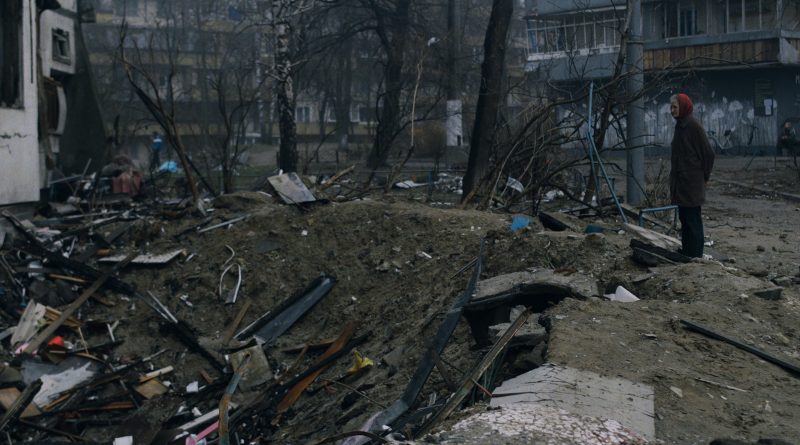Hurricane Michael: What You Can Do Now
As Hurricane Michael continues to wreak havoc along its path, disaster relief efforts have already begun on site and behind the scenes. Organizations such as Save the Children, the Salvation Army, Gleaning for the World, Chabad Lubavitch Organization, The Humane Society, World Vision, and the American Red Cross, have started fundraising campaigns open for donations and volunteers to come and rebuild. They’re readying relief supplies and identifying church partners in potentially affected areas allowing them to mobilize as quickly as possible once it’s safe to begin restoration efforts.
Leading disaster relief organization World Vision recommends praying and giving as the top ways to help those affected by Hurricane Michael.
When disaster strikes, World Vision is often one of the first organizations to respond across the United States. Their relief workers connect with partners — including religious institutions — in affected regions to help hard-hit communities. They are continually preparing for the next disaster by equipping their field sites and partners to help those affected by tornadoes, floods, storms, wildfires, and other disasters across the country. They also remain long after disasters have faded from the headlines helping communities rebuild.
Their prayer: “Almighty Father, we ask for Your care and protection for people in the path of Hurricane Michael. Give them the assurance of Your presence and equip those who will provide relief and assistance after the storm passes. Strengthen the minds and bodies of first responders for the days ahead.”
If you’ve been affected by the hurricane and need assistance, contact them or FEMA and your insurance company to set the process in motion to receive aid. To find additional funding for yourself, your organization or others in need, there are some grants available for hurricane relief on GrantWatch.com with the key words Hurricane and disaster-relief-grants.
For immediate assistance, there are shelters available but they’re filling up quickly. Shelters in Dothan, Florida, and some others in the panhandle and across south Alabama are some of the closest for evacuees.
The two main shelters in Dothan are Wiregrass Church at 900 West Main Street and the First Baptist Church shelter at 300 West Main Street. Both have plenty of cots and food and both still have room if you need assistance.
There are three American Red Cross shelters in other areas of Alabama open now. Aldersgate United Methodist Church, 6610 Vaughn Rd, Montgomery, Ozark Civic Center, 302 East College St, Ozark, 36360 and Robertsdale Coliseum, 19477 Fairground Rd, Robertsdale, 36567
The Dothan, Florida shelters have family areas and places where children can play.
Background
Hurricane Michael made landfall near Mexico Beach, about 20 miles (32 km) southeast of Panama City in the Florida Panhandle as a Category 4 storm early Wednesday afternoon with tree-snapping winds and towering waves that flooded whole beach towns. Maximum sustained winds of 155 mph (249 kph) according to Reuters News Service, have been recorded in the storm’s eye wall. It is the first Category 4 storm in recorded history to make landfall in the northeast Gulf Coast. Its sustained winds were just 2 mph (3.2 kph) shy of the highest, Category 5.
Coastal areas could see up to a foot of rain, winds above 130 mph, and storm surges of 14 feet. The storm is expected to track through Georgia and the Carolinas as it moves inland Wednesday and Thursday, bringing more wind and rain to areas affected by Hurricane Florence.
“This is the worst storm that our Florida Panhandle has seen in a century,” Gov. Rick Scott said Wednesday morning.
“Unfortunately, this is a hurricane of the worst kind,” said Brock Long, head of the Federal Emergency Management Agency.
Here’s what makes Hurricane Michael especially dangerous:
It’s the strongest hurricane to ever hit Florida’s panhandle
Michael crashed onto Florida’s coast Wednesday with 155 mph winds — strong enough to demolish houses.
Those kinds of winds “are above typical building codes,” Long said. Even with the tougher standards in the Florida Building Code, set in place after Hurricane Andrew in 1992, older homes aren’t built to withstand a hurricane of this magnitude.
Hurricane Michael began in the southwest Caribbean Sea and was first monitored by the National Hurricane Center on October 2. It strengthened from a tropical storm to a hurricane by October 8. Warnings were sent out to 20 counties to head towards higher ground, but those who hadn’t left their homes by early Wednesday morning were told it was too late to leave.
Local municipalities, nonprofits, religious institutions, community-based groups and concerned citizens frustrated by the often-overwhelming process involved with searching for grants can identify funding opportunities in support of hurricane and other disaster relief initiatives at GrantWatch.com. Sign-up to receive the weekly GrantWatch newsletter which features geographic-specific funding opportunities.
About the Author: Staff Writer at GrantNews
Sources:

